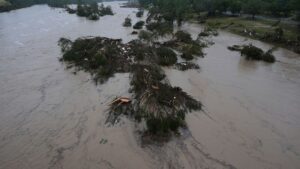
As the Fourth of July weekend approaches, two tragic drownings have been reported at popular beaches in Beaufort County, South Carolina. The incidents, involving two men visiting from Georgia, occurred in separate events on Hilton Head Island and Hunting Island State Park. These unfortunate events highlight the importance of beach safety during one of the busiest times of the year.
The first incident took place on June 30 at Hilton Head Island’s Coligny Beach. A 69-year-old man drowned after a medical emergency prompted a bystander to bring him to shore. Despite immediate resuscitation efforts by a lifeguard, the man could not be revived. The following day, on July 1, a 65-year-old man drowned at Hunting Island State Park. A fisherman spotted him floating and attempted CPR after bringing him to shore, but the efforts were unsuccessful.
Beach Safety and Weather Conditions
The drownings come as Beaufort County officials urge beachgoers to remain vigilant about safety, especially with the potential for hazardous conditions. The National Weather Service office in Charleston, along with the National Hurricane Center, provides forecasts and warnings, including rip current risks. These warnings are crucial for preventing similar tragedies.
Visitors to Hilton Head Island can access real-time beach conditions through Shore Beach Service. Beach flags and signs at lifeguard stands are also in place to inform visitors of current hazards. Yellow flags indicate moderate surf or currents, red flags signify high hazard conditions, and purple flags warn of dangerous marine life.
Understanding Rip Currents and Safety Measures
Rip currents are powerful channels of water flowing away from shore, posing significant risks to swimmers. According to the United States Lifesaving Association, rip currents account for over 80% of rescues performed by surf beach lifeguards. Understanding how to identify and react to rip currents can be life-saving.
“If caught in a rip current, remain calm and swim parallel to the shore until out of the current, then swim back to land at an angle,” advises the National Oceanic and Atmospheric Administration (NOAA).
Beachgoers are encouraged to swim near lifeguard stations and heed all posted warnings. The presence of lifeguards significantly reduces the risk of drowning, as they are trained to respond quickly to emergencies.
Historical Context and Expert Opinions
Historically, the Fourth of July weekend sees a surge in beach attendance, which can lead to an increased number of incidents. In previous years, South Carolina beaches have reported similar tragedies during this period. Experts emphasize the need for public awareness campaigns and enhanced safety measures to mitigate these risks.
Dr. Emily Carter, a coastal safety expert, notes, “Public education on beach safety, combined with effective warning systems, can drastically reduce the number of accidents during peak times.” She advocates for more comprehensive safety briefings for tourists and the use of technology to disseminate real-time safety information.
Additional Incidents and Precautions
In addition to the drownings, two non-life-threatening shark bites were reported on Hilton Head beaches in June, underscoring the diverse range of hazards present in coastal environments. Beachgoers are reminded to stay informed about marine life activity and to exercise caution in the water.
As the community mourns the loss of the two visitors, the Beaufort County Coroner’s Office is working to notify their families. Meanwhile, local authorities continue to stress the importance of safety measures and awareness to prevent future tragedies.
Looking ahead, officials are expected to enhance safety protocols and increase the presence of lifeguards during the holiday weekend. These steps aim to ensure a safer environment for all beach visitors as they enjoy the summer festivities.






